Overview
This Online Course teaches core skills in requirements analysis, from stakeholder engagement to documentation and validation. Learners explore best practices to ensure business needs are accurately translated into actionable project requirements.
Description
This course introduces learners to the process of performing requirements analysis, a critical step in successful project planning and solution development. It covers identifying stakeholder needs, gathering and documenting requirements, analyzing feasibility, and ensuring alignment with business objectives. Learners will also explore techniques such as interviews, workshops, and modeling to elicit accurate and complete information.
Ideal for business analysts, project managers, and IT professionals, this course helps participants develop the skills to bridge the gap between business needs and technical solutions. Through case studies and practical tools, learners will gain the confidence to analyze, validate, and manage requirements effectively throughout the project lifecycle
Course Content
Unit 1: Identify business needs, opportunities and requirements
- The internal and external business environment and architecture are analysed within the scope of a designated business mandate.
- The current state of technology is assessed in order to inform solution architecture and clarify business problems.
- The business problem, opportunities and/or needs are analysed in order to identify requirements for new solutions.
- A gap analysis is performed to determine where the organisation is and where it wants to be.
- Initial requirements are derived and documented in order to clarify solution scope.
Unit 2: Determine an approach to identifying the most appropriate solution
- The potential solution approach options are identified in order to prepare for a feasibility analysis.
- A feasibility analysis is conducted for each solution approach option to facilitate business decision making processes.
- Viable potential solution approach is recommended to facilitate business decision making processes
- A feasibility study report is produced to communicate and validate the recommended solution approach with stakeholders.
Unit 3: Define the project and solution scope
- The scope of work is defined using selected techniques in accordance with project standards in order to prepare the business case.
- The ambit of investigation is defined using selected techniques in accordance with project standards in order to prepare the business case.
- The solution scope is explored in order to prepare the business case.
- The scope of work is established using selected techniques in order to prepare and present the business case.
- The solution and project scope are clarified by listing exclusions.
Unit 4: Develop the business case
- The benefits are identified and quantified for project justification purposes.
- Costs are identified and quantified for project justification and control purposes.
- An initial risks assessment is conducted for project feasibility purposes and to inform a risk management plan.
- A business case is compiled and presented in order to facilitate project selection and decision making by business stakeholders.
Accreditation
- Non-accredited: Short course only
- Duration: 1h 30m
- Delivery: Classroom/Online/Blended
- Access Period: 12 Months


